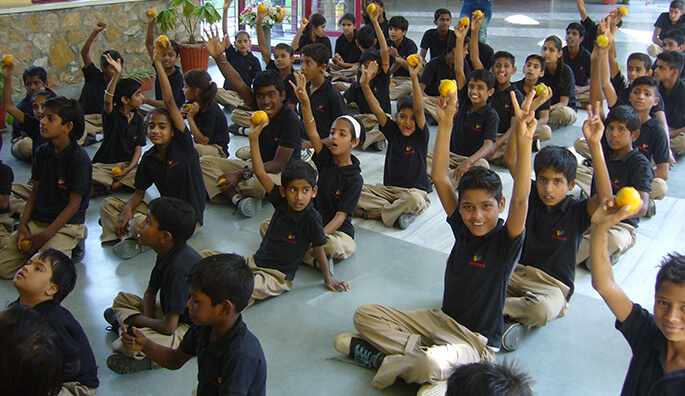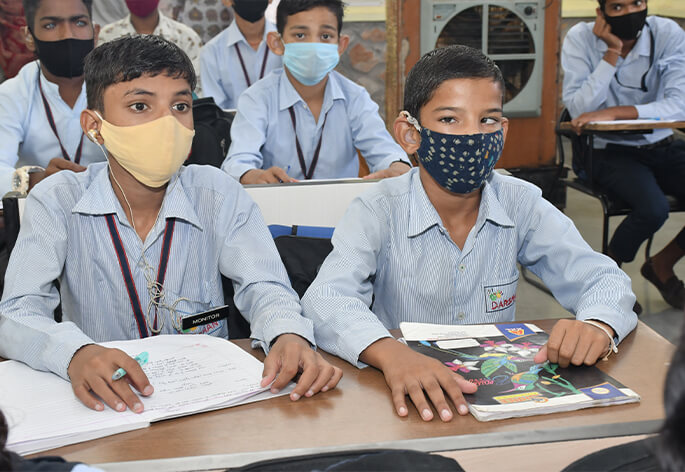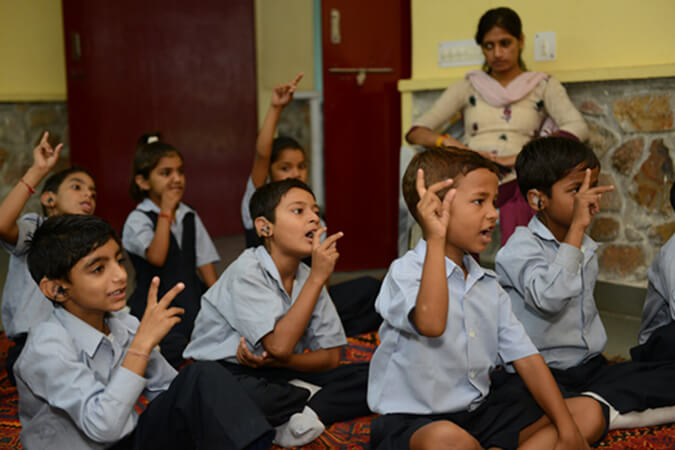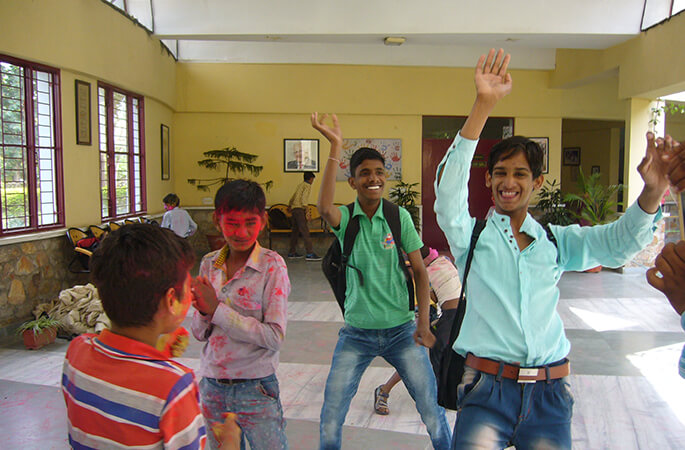- Email: darshan.vrc2006@gmail.com
- (0141)2945148 / 3199829 | +91 93517 07666
- Email: darshan.vrc2006@gmail.com
-
(0141)2945148 / 3199829
+91 93517 07666

Darshan first opened its doors in 2006 to young hearing-impaired children. There is no other such facility in or near the city of Jaipur. Hearing-impaired children are neglected children in several ways. Since they are hearing impaired, they have difficulty getting admission to government schools even as education in government schools is completely free. This is because hearing-impaired children are not able to hear and understand conventional teaching methods and are therefore not in a position to keep up with studies in a regular school. These children are often neglected in the home environment, and are sometimes put to doing domestic chores very early in their lives as they are considered good for nothing else.


Teaching is a noble profession; it is more challenging when you have to teach a disabled (Hearing Impaired) student. The teacher assesses the student’s ability and accordingly crafting her teaching plans. The teacher produces the best output for a small group of 8-10 Hearing Impaired students. Where she finds time to adapt learning material to students’ needs, keep track, and reflect on the student’s progress. Monitor the child’s behavioral patterns and arrange appropriate interventions if needed. Special Education Teachers develop teaching plans according to students’ learning needs. They search for activities and resources that can be easily adapted to each child’s educational requirements.
Initially our students were recruited in open drives in the city, which were conducted at different locations of Jaipur. Parents began to bring in their children through word-of-mouth. Gradually, more and more parents and guardians reached out to us. Darshan invariably encouraged parents or guardians to accompany the children to school initially, especially in the junior classes. This helped considerably in settling the child into the school environment.
Parent-teacher meetings are conducted every 4-6 weeks. Parents are counselled in every case.
A classroom technique, ‘one student one teacher,’ conducted with each child for a few hours each week (often with the help of parents), has been marked a success. Different methods are used to teach the children to speak as much as possible and wean them away from sign language, which the parents and siblings tend to use at home.


Play groups have helped the children develop both physical and mental capabilities. This technique also helps teachers to understand the degree of progress in hearing impairment or even whether the hearing aids need to be changed. The playgroup slowly develops into more academic learning, with emphasis on speech therapy to develop the ability of the students in pronouncing different alphabets and words.
Many families from villages beyond Jaipur bring their child to Darshan for an education. This poses a big challenge for them as they have to place their child with a relative in Jaipur. Despite this, attendance has continued to grow. In 2018-19, the number of children stood at 86 and the average attendance percentage was 81%. The year ending 2019 has seen 92 children in 10 classes.
Darshan is a special school established under the aegis of the Lala Chaman Lal Educational Trust for Boys and the Shrimati Bhagwan Devi Educational Trust for Girls. It is a public charitable trust that was registered under the Societies Registration Act 1860 on 11 April 2000, and is located in Jaipur, Rajasthan 10 minutes from Jaipur airport. it is a day school for hearing-impaired children from classes 1 to 10. It opened its doors to hearing-impaired children in 2006.